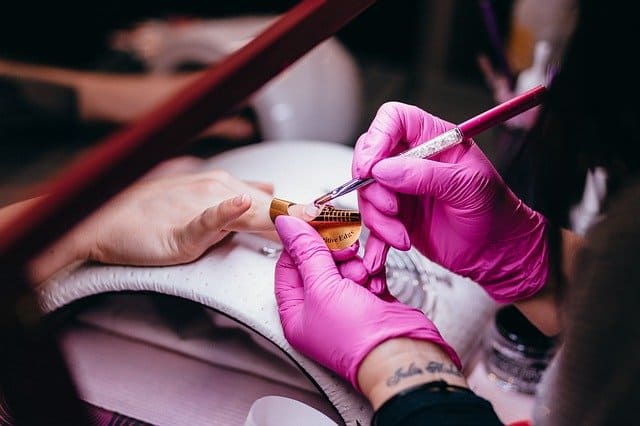There are a number of anti-nail biting strategies and products that one might consider to stop the habit in its tracks. Whether or not any of them work for you specifically is up for debate. But each option might be worth trying if you’re determined to quit nail biting and in fact, several of these nail biting strategies might be worth trying in conjunction with one another to improve your chances of quitting.
Having a manicure might be used as a strategy to prevent nail biting by touching up and taking care of your nails to the point where they look too nice for you to want to bite them. Whether it’s the money you spend on the service or the end look that you receive or both together, a manicure may be the motivation you need to be dissuaded from biting your nails and ruining the nice look that you’ve paid for. At a minimum having your nails professionally done will show you what your nails can look like when you’re not biting them. And for women, you may additionally consider the use of acrylics or so-called fake nails to further dissuade yourself from nail biting.
Menicures
While manicures have traditionally been considered something that only women partake in, men are increasingly having the service done, too. Menicures as they are often referred to, are part of a bigger movement that will see men globally spend upwards of $81.2 billion by 2024 on grooming products and services.
Traditionally men’s grooming products have been the ones we all know about: Shaving creams and lotions, moisturizers, scrubs and things of that nature. Manly stuff with musk and other strong scents largely aimed at shaving. Increasingly though, men’s grooming products and services are growing in scope and men are now able to choose many of the same ones that women can. And it’s becoming more sociable acceptable to do so, too.
Manicures and Nail Biting
I heard an interesting story from years ago that made me think about something that could possibly benefit both men and women nail biters. A former long term nail biter went to a nail salon many years ago thinking about this exact strategy: She asked the nail salon technician if she could put acrylics on her bitten nails to help her stop nail biting. Rather than responding positively, the nail tech embarrassed the woman in front of other customers by telling her she needed to quit biting her nails and come back at that time.
So what did this nail biter do? She ended up starting up her own nail salon aimed at both men and women to help them quit nail biting. Being a person who had bitten her nails for years, she used her own experience along with the incident at the nail salon where she was rejected to help men and women quit their nail biting through the use of education and professional nail work.
What she also found was that many of her clients were nail biters who had specifically experienced the same thing she did: They were also rebuffed by nail salons who refused to help them until they stopped biting their nails. So she helped them stop biting their nails and she additionally helped with their manicures too.
Nail Biting Overview
Studies show that nail biting usually doesn’t occur before age 3 or 4, generally increases from childhood to adolescence but then decreases in adulthood to the point where many people quit by age 30 – 35 on their own. There doesn’t appear to be agreement however as to the percentage of children who bite their nails, quit and then begin biting them again later in life.
It’s also understood that after age 10, boys tend to bite their nails more than girls. And as we age and continue to bite our nails, the habit becomes more difficult to quit on our own to the point where it often becomes a subconscious activity that we are unaware of.
Conclusion
- Having your nails professionally taken care of by way of a manicure may be used as a strategy to quit nail biting and may be considered by both men and women.
- Men are increasingly using manicure services and may too benefit from having nails professionally done as a strategy against nail biting.
- While nail biting generally doesn’t occur before children are younger than 3 years old, it does tend to increase in prevalence into teenage years and often stops by age 30 on its own.
- Having said that, many adults continue biting nails well into their 30s and beyond.
Recent Posts
Stimming, short for self-stimulatory behavior, refers to repetitive or rhythmic movements or sounds that some individuals with autism or other neurodevelopmental conditions engage in. It is often...
Nail biting and nail picking is a common habit that affects many people, especially during times of stress or boredom. While it may seem like a harmless habit, it can actually have negative...


